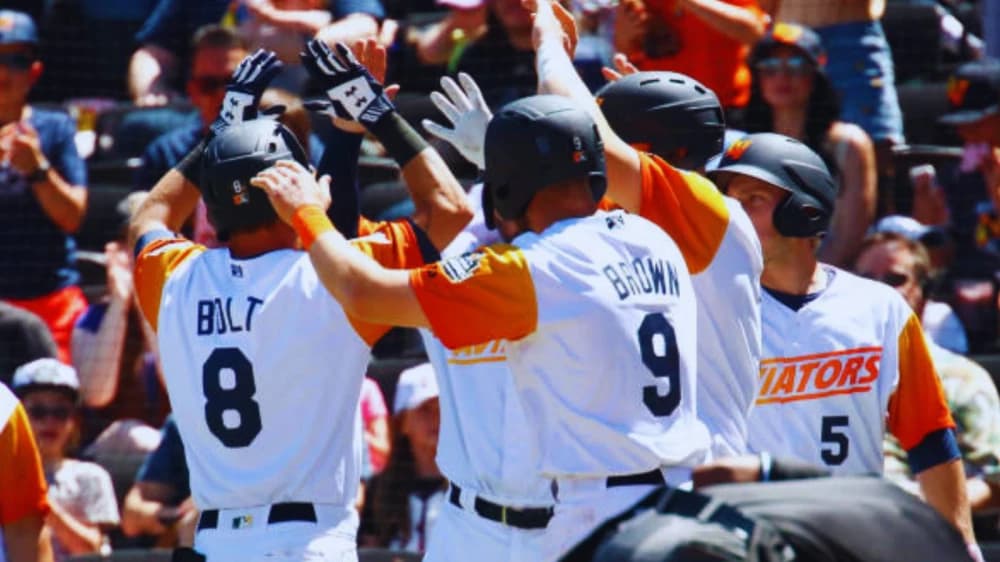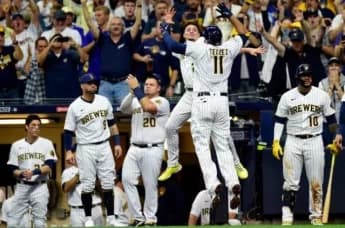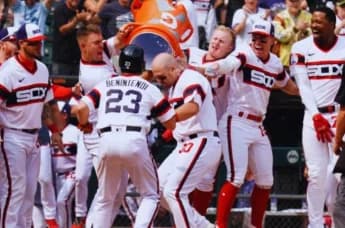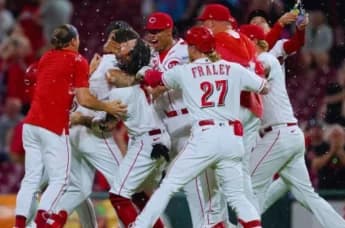Discover the evolution of the Las Vegas Aviators, a premier Minor League Baseball team, as they shape the sports landscape while fostering talent and community connections in Southern Nevada.
Summary
The Las Vegas Aviators are a Minor League Baseball team located in the lively city of Las Vegas, Nevada. They serve as the Triple-A affiliate of the Oakland Athletics and participate in the Pacific Coast League (PCL), a league recognized for its competitive nature and its significant role in developing players for Major League Baseball. Established in 1983 as the Las Vegas Stars, the team has experienced various changes in identity, branding, and affiliations throughout the years. Since 2019, the franchise has been known as the Las Vegas Aviators, honoring aviation pioneer Howard Hughes, whose legacy is closely linked to Las Vegas' history. This rebranding took place alongside the team’s relocation to the modern Las Vegas Ballpark, situated in the upscale community of Summerlin.
The Aviators are essential to the development pipeline of the Oakland Athletics, offering young talent and rehabilitating veterans a platform to refine their abilities before joining the major leagues. As a Triple-A team, the highest tier of Minor League Baseball, the Aviators frequently feature a roster that combines up-and-coming prospects with seasoned athletes on rehab assignments or in search of a comeback. This varied composition lends a distinct character to the team, making their games exciting and unpredictable for spectators. Las Vegas, a major city without its own MLB franchise, boasts a passionate and diverse fanbase that enthusiastically supports the Aviators. The blend of top-notch baseball and the vibrant atmosphere of Las Vegas positions the Aviators as one of the most followed and discussed teams within minor league baseball.
The move to Las Vegas Ballpark in 2019 marked a pivotal moment in the team’s timeline. The venue can accommodate around 10,000 spectators and includes modern features that compete with those found in Major League stadiums. With amenities like air-conditioned suites, party decks, a pool beyond the outfield, and local food vendors, the ballpark enhances the game-day experience. This investment in facilities demonstrates the team's dedication to excellence both on and off the field. The ballpark has significantly upgraded player amenities and fan interaction, while also drawing larger crowds and elevating the franchise's overall profile. It has emerged as a central location for baseball enthusiasts in Southern Nevada and has played a crucial part in boosting the sport’s popularity in the area.
Throughout the years, the Aviators have welcomed numerous remarkable players into their ranks, many of whom have progressed to find success in the major leagues. The team’s former players consist of both emerging talents and experienced veterans, each playing a part in the franchise's legacy. Their on-field performance has been impressive, marked by several playoff appearances and solid finishes during the regular season. Even with the inherent challenges of being a developmental team—characterized by frequent roster changes and limited player stability—the Aviators have succeeded in upholding a competitive spirit and a winning culture. This ongoing success highlights the strength of the team's management, coaching staff, and the organizational philosophy of the Oakland Athletics.
In recent years, Las Vegas has experienced a remarkable transformation into a sports city, with the Aviators playing an essential role in this story. The arrival of the NHL’s Golden Knights, the NFL’s Raiders, and discussions surrounding a possible MLB expansion or relocation have significantly altered the city’s sporting landscape. In this evolving setting, the Aviators remain a crucial element, providing professional baseball to a market eager for high-quality sports entertainment. Their presence not only fulfills an important niche but also reinforces the argument for Las Vegas as a future home for a Major League Baseball team. Regardless of whether that vision comes to fruition in the near future, the Las Vegas Aviators will continue to be a fundamental part of the city’s sports culture, offering fans a preview of the upcoming baseball stars in an exciting and accessible environment.
History of the Team
Founding Years: Las Vegas Stars (1983–2000)
The Las Vegas Aviators trace their history back to 1983, when they were founded as the Las Vegas Stars. This team served as a Triple-A affiliate for the San Diego Padres and marked the return of professional baseball to Las Vegas after a hiatus since the 1950s. The Stars played their home games at Cashman Field, situated just north of downtown Las Vegas. They quickly gained a dedicated fan base, bringing high-level baseball to a city better known for its entertainment and gaming scenes. Early on, the Stars had notable success on the field, winning multiple division titles and securing the Pacific Coast League Championship in both 1986 and 1988. Their affiliation with the Padres ensured a steady influx of future Major League talent, and the franchise became recognized as a development ground for aspiring baseball stars.
Move to Las Vegas 51s (2001–2018)
In 2001, the team underwent significant rebranding and became known as the Las Vegas 51s, a name inspired by the nearby Area 51 and the city's longstanding ties to extraterrestrial folklore. This rebranding also coincided with a change in Major League affiliations. The Padres ended their relationship with the team, making the 51s the Triple-A affiliate of the Los Angeles Dodgers. This transition introduced a new influx of talent and enhanced the franchise’s position in minor league baseball. The partnership with the Dodgers lasted until 2008, during which the 51s remained competitive, albeit without the same level of success they had achieved in the 1980s.
In 2009, the team formed a new affiliation agreement with the Toronto Blue Jays, marking a notable shift from its long-standing ties to West Coast baseball. Although the Blue Jays period did not generate the same level of success or enthusiasm among fans, it was an essential time that ensured the team's continued operations and allowed the franchise to reevaluate its long-term objectives. The 51s faced challenges with aging facilities at Cashman Field, leading to increasing discussions about the possibility of relocating to a new stadium during this era.
Transformation into the Las Vegas Aviators (2019–Present)
The most notable change in the franchise's history occurred in 2019 when the team was rebranded as the Las Vegas Aviators. This new name pays tribute to aviation pioneer Howard Hughes, whose legacy is intricately linked to Las Vegas's history and who once owned numerous properties in the region. The rebranding was complemented by a significant infrastructure upgrade as the team moved to the newly built Las Vegas Ballpark in Summerlin. This state-of-the-art facility transformed the experience for both players and fans, quickly establishing itself as one of the top venues in minor league baseball.
The relocation to Summerlin also initiated the team’s current association with the Oakland Athletics. This collaboration has proven advantageous for both parties, with the Aviators acting as a crucial development platform for the Athletics' leading prospects. The team has experienced a revival in fan enthusiasm and competitiveness on the field, consistently attracting large crowds and showcasing strong lineups. The new identity, location, and partnership have provided the franchise with a fresh beginning while preserving its enduring presence in the Pacific Coast League.
Throughout their history, the Las Vegas Aviators have shown remarkable resilience and adaptability. From their championship days as the Stars to the rebranding challenges faced during the 51s era, and now as one of the top Triple-A franchises in the nation, the team has continually evolved to meet the demands of a changing sports environment. Their journey not only showcases the growth of baseball in Las Vegas but also highlights the city's rise as a significant player in the professional sports arena.
Infrastructure and Player Development
The Las Vegas Aviators have positioned themselves as a leading franchise in Minor League Baseball, not only due to their competitive strength and robust partnerships but also because of their exceptional infrastructure and contributions to player development. At the heart of their achievements is the Las Vegas Ballpark, a state-of-the-art facility that opened in 2019, replacing the outdated Cashman Field as the team's home. This new stadium marks a considerable advancement for both the organization and its parent club, the Oakland Athletics, offering an environment that fosters top-tier athletic training, performance, and fan involvement.
Las Vegas Ballpark is situated in the planned community of Summerlin, providing an excellent environment for a professional sports team. The stadium boasts a natural grass playing field, a design that adapts to the extreme Nevada heat, and accommodations for over 10,000 fans. It serves not only as a game venue but also houses various training facilities that promote the comprehensive development of players. These facilities include batting cages, pitching tunnels, advanced video review technology, and contemporary locker rooms outfitted with everything necessary for athletes' daily recovery and preparation. The weight rooms and rehabilitation areas are designed to meet professional-level standards, ensuring players are in peak physical condition for their transition to Major League Baseball when needed.
The quality of the facilities is closely linked to the team’s main role as a Triple-A affiliate, which acts as the final stage for players before they advance to the major leagues. As an integral part of the Oakland Athletics’ player development system, the Aviators focus on honing the skills of top prospects, handling injury rehabilitation assignments, and assessing talent in a competitive setting. The closeness of training facilities to advanced analytics tools and coaching personnel enables customized, data-driven development programs for each player. Whether it's fine-tuning a pitcher’s mechanics or enhancing a batter’s timing and discipline at the plate, the Aviators’ infrastructure facilitates all aspects of professional growth.
The coaching staff, many of whom have substantial Major League experience, is vital in turning available resources into real improvements on the field. Development extends beyond athletic performance; the Aviators are also dedicated to building mental resilience, game awareness, and leadership skills. Given the ever-changing nature of minor league rosters, the staff excels at quickly assessing and integrating new players into a unified team. This flexibility is crucial in ensuring that every player—whether an up-and-coming talent or a seasoned veteran on a rehab assignment—receives the necessary guidance and instruction to further their careers.
The relationship between the Aviators and the Oakland Athletics has strengthened over the years, particularly after the relocation to Las Vegas Ballpark. Consistent communication between the management teams, shared performance analytics, and synchronized training programs facilitate a smooth transition for players transferring between the two franchises. This coordination guarantees that a promotion to the major leagues is not a disruptive event, but rather a continuation of the established developmental journey in Las Vegas. Moreover, the excellent quality of life in Summerlin, supportive fans, and the professionalism of the Aviators organization make the team a desirable option within the minor league landscape.
In many respects, the Las Vegas Aviators exemplify what a Triple-A franchise should aspire to be. Their facilities are not only state-of-the-art but also specifically designed to foster the development of future major league talents. Every aspect, from the stadium architecture to the training amenities and coaching staff, is structured to assist players in realizing their maximum potential. The organization recognizes that on-field success is a direct outcome of investments made off the field, and they are dedicated to cultivating an environment where talent can flourish. This dedication has established the Aviators as an essential part of the Oakland Athletics’ development network and as one of the most esteemed organizations in the Pacific Coast League.
Team Accomplishments
Initial Achievements as Las Vegas Stars
The team currently known as the Las Vegas Aviators originally gained recognition in Minor League Baseball as the Las Vegas Stars. Acting as the Triple-A affiliate of the San Diego Padres, the Stars quickly made a name for themselves as a formidable team in the Pacific Coast League after their establishment in 1983. Their most significant accomplishments during this period include winning two PCL championships in 1986 and 1988. These early victories not only legitimized professional baseball in Las Vegas but also laid a foundation for success that shaped the team’s culture for many years. During this time, the franchise gained a reputation for developing players who would later achieve greatness in the major leagues, earning it respect as one of the top developmental teams in Triple-A baseball. Frequent playoff appearances in the late 1980s and early 1990s further established the team as a competitive and well-managed organization.
Rebranding and Transition Phase
The rebranding of the franchise as the Las Vegas 51s in 2001 marked the beginning of a new era filled with both challenges and achievements. During this time, the team underwent multiple changes in Major League affiliations, initially aligning with the Los Angeles Dodgers, then transitioning to the Toronto Blue Jays and the New York Mets. Despite these shifts, the team maintained its relevance in the Pacific Coast League. Although they did not secure an additional championship during this period, they remained competitive and consistently developed future Major League Baseball players. The franchise earned several division titles and achieved strong finishes in the regular season, keeping it in the public eye, even though postseason success was limited. The era of the 51s acted as a link between the franchise’s early successes and its resurgence in more recent times, sustaining a consistent presence in the league and continuing to grow a dedicated fanbase despite outdated facilities and changing affiliations.
Return of the Las Vegas Aviators
The latest chapter in the franchise's journey began with the 2019 rebranding to the Las Vegas Aviators and their relocation to the cutting-edge Las Vegas Ballpark, marking the start of a new phase of success and recognition. The Aviators, now proudly serving as the Triple-A affiliate of the Oakland Athletics, have emerged as one of the most talked-about teams in Minor League Baseball, attributed to their contemporary facilities, robust player development programs, and renewed success on the field. In their first season as the Aviators, the team achieved an impressive regular season record and clinched a division title, indicating a resurgence to the upper echelons of Triple-A baseball. Although the PCL championship has remained just out of reach in recent years, their consistently strong performances have positioned them as top contenders in the league.
In addition to their performance on the field, the Aviators have garnered considerable acclaim for their fan interaction, record attendance, and overall impact on the baseball community. The Las Vegas Ballpark consistently ranks among the top in attendance, showcasing the team's rising popularity and the exceptional experience provided to fans. This success off the field is crucial in helping the team attract talent and maintain strong performance year after year. The Aviators’ accomplishments therefore go beyond merely winning or losing, demonstrating a comprehensive approach to team growth, player achievement, and community engagement.
Ongoing Impact and Heritage
Throughout the years, the franchise has acted as a crucial proving ground for numerous players who have gone on to achieve success at the Major League level. Their consistent ability to nurture talent for several MLB organizations, especially the San Diego Padres and Oakland Athletics, stands out as one of their most important long-term accomplishments. Even in seasons that did not culminate in championships, the franchise left a mark by shaping the careers of professional athletes. This legacy of influence, paired with times of competitive success, division titles, and two league championships, characterizes the Las Vegas Aviators as a franchise that prioritizes both achievement and growth. Their evolution through various identities and affiliations has not weakened their dedication to excellence, and the team's accomplishments continue to embody that lasting philosophy.
Rivalries and Important Matches
Rivalries have always been a crucial aspect of the identity of competitive sports teams, and for the Las Vegas Aviators, their journey through various eras and affiliations has led to some captivating matchups with historical significance and emotional depth. Unlike Major League Baseball, where historic rivalries can last for generations and are woven into the fabric of the sport, Triple-A teams like the Aviators cultivate rivalries through geographic closeness, divisional competitions, and repeated high-stakes games. In Las Vegas, these rivalries play a vital role in shaping the team's identity and creating a dedicated fan base that passionately supports the team during these thrilling and often unpredictable matchups.
One of the most enduring rivalries in the history of the franchise emerged during its early days as the Las Vegas Stars, particularly with the Albuquerque Dukes, who were the Triple-A affiliate of the Los Angeles Dodgers at the time. The two teams often faced off in crucial games with playoff stakes, and their matchups regularly attracted large crowds and significant media coverage. These encounters were characterized by fierce competition, and the teams' familiarity created a natural animosity that intensified the rivalry. The fierce battles between Las Vegas and Albuquerque became a defining feature of the Pacific Coast League in the 1980s and 1990s. Although the rivalry softened somewhat after the Dukes moved and became the Albuquerque Isotopes, it still remains a significant part of the team's historical narrative.
In recent years, the Aviators' connection with the Oakland Athletics has sparked renewed and exciting rivalries, especially with teams linked to American League West rivals. Notably, the matchups against the Tacoma Rainiers, who are the Triple-A affiliate of the Seattle Mariners, stand out. Both clubs have consistently been among the top competitors in the league, making their games significant with playoff implications. The Rainiers and Aviators have engaged in several closely contested series since Las Vegas rebranded in 2019, often serving as a glimpse of talent that could shape the future of the American League. Each encounter between these teams highlights emerging prospects, seasoned veterans on rehabilitation assignments, and game plans that closely reflect those of their Major League counterparts. The attention these games garner emphasizes their increasing importance within the Triple-A realm.
A new rivalry has emerged with the Reno Aces, the Triple-A affiliate of the Arizona Diamondbacks. This in-state competition between two teams from Nevada adds an element of regional pride and engages fans. The close proximity of the two cities intensifies the rivalry, as supporters from both teams often travel to these games, creating an atmosphere reminiscent of the playoffs regardless of the actual standings. Matches between Las Vegas and Reno tend to be high-scoring, owing to the offensive nature of both ballparks, and have delivered numerous memorable moments that heighten the competitive spirit. These games hold importance not just for their standings implications but also as a barometer for which team can assert its dominance in the state.
Over the years, several significant matches have shaped the competitive spirit of the franchise. The championship seasons of 1986 and 1988 saw the Stars engage in a series of pivotal playoff games that remain etched in the memories of loyal fans. More recently, the 2019 season was a turning point for the Aviators as they secured the Pacific Southern Division title in their first year with the new branding. The crucial games leading to that division victory were fiercely contested and showcased the team's ability to thrive under pressure in front of sold-out crowds at Las Vegas Ballpark. Those games set a new benchmark for excellence, confirming that the Aviators were poised to enter a new era of competitive baseball in Southern Nevada.
Rivalries and significant games are much more than mere entries on the Las Vegas Aviators' calendar. They embody the essence of the franchise, linking generations of players and fans through memorable experiences and intense competition. These matchups continue to define the team's identity, crafting narratives that go beyond the results and delve into regional pride, organizational growth, and the relentless pursuit of excellence on the baseball field.
Supporters, Community Engagement, and Team Anthems
The Las Vegas Aviators have developed a highly dedicated and growing fan base that mirrors the city’s increasing population and its desire for professional sports. Unlike many other minor league teams, the Aviators benefit from their location in a major entertainment center, which allows them to attract support not only from local residents but also from tourists, families, and baseball fans visiting the area. This has led to a uniquely diverse audience at each home game, fostering an atmosphere that combines traditional baseball enthusiasm with the vibrant energy typical of Las Vegas. Over the years, the fan base has transformed from a small, committed group during the team's time at Cashman Field to a flourishing community of thousands who regularly fill the state-of-the-art Las Vegas Ballpark in Summerlin. The shift to this new venue and the rebranding as the Aviators in 2019 significantly boosted public interest, enabling the team to achieve some of the highest attendance figures in all of Minor League Baseball since the stadium opened.
Las Vegas Ballpark has evolved into more than just a venue for baseball; it acts as a community hub for the residents of the city. Fans of all ages are attracted to the ballpark’s inviting atmosphere, family-friendly features, and captivating in-game entertainment that enhances the on-field experience. The organization has made significant efforts to foster an inclusive environment that caters to both casual viewers and die-hard fans. With themed nights, promotional giveaways, and interactive events that involve players and community leaders, the Aviators’ management has rolled out various strategies to engage fans and build stronger connections with the local community. Local schools, businesses, and non-profit organizations frequently participate in the team’s outreach initiatives, fostering a sense of shared ownership and pride in the franchise’s achievements.
Community involvement is a fundamental aspect of the Aviators’ identity. The team actively engages in charitable activities, youth sports clinics, and civic events across Clark County. Both players and coaching staff participate in local outreach programs, frequently visiting schools, hospitals, and community centers to connect with fans in meaningful ways. These initiatives highlight the organization’s dedication to being more than just a baseball team; they establish the Aviators as an essential part of the social and cultural landscape of Las Vegas. The team's strong local presence ensures that they remain relevant throughout the year, even during the off-season, fostering enduring relationships that extend beyond the sport itself.
A notable aspect that unites the fan base is the use of club anthems and musical traditions during games. Although the Aviators do not possess a widely recognized anthem like some other major league teams, they have embraced music as a vital component of the ballpark atmosphere. Each win is celebrated with familiar and uplifting tunes that regular attendees have come to know. Additionally, every player has a walk-up song that reflects their personality or heritage, fostering a personal and engaging connection between the players and the audience. The music at Las Vegas Ballpark is thoughtfully selected to align with the game's rhythm and the crowd's energy, often shifting from lively contemporary hits to classic rock staples during significant moments. These auditory traditions, while subtle, significantly contribute to a sense of continuity and shared enthusiasm among fans.
The Las Vegas Aviators have successfully connected professional sports with the local community. Through robust fan engagement, regular community outreach, and thoughtfully designed in-game experiences, they have fostered a fan base that is not only enthusiastic but also deeply invested in the team’s journey. The enthusiastic support for the team reflects its commitment to embedding itself in the local culture of Las Vegas while also offering a venue for visitors to enjoy the essence of Minor League Baseball at its best. This blend of local pride, inclusive atmosphere, and emotional attachment has established the Aviators as one of the leading franchises in Triple-A baseball today.
Current Trends and Future Prospects
The Las Vegas Aviators are recognized as one of the leading and forward-thinking franchises in Minor League Baseball, blending tradition and innovation as they advance within the competitive world of Triple-A baseball. Since their affiliation with the Oakland Athletics in 2019, the Aviators have become an essential part of the Athletics' player development strategy, acting as the final step for top prospects nearing Major League promotion. This partnership has greatly shaped the Aviators' current roster, which showcases a mix of talented young players, seasoned minor league veterans, and occasionally, established major leaguers on rehabilitation assignments. The team’s recent performance highlights a renewed emphasis on consistency, skill enhancement, and strategic competitiveness, supported by access to excellent facilities and a dedicated front office.
Since 2019, Las Vegas Ballpark has been a vital part of the team's ongoing success. With its cutting-edge amenities, superior training facilities, and fan-focused design, the stadium has attracted high-caliber talent and provided an exceptional baseball experience. Recognized as one of the top venues in Minor League Baseball, it boasts modern locker rooms, sophisticated analytics and fitness centers, along with advanced technology systems that support player monitoring and development. This facility not only benefits players but is also crucial in engaging the fanbase and sustaining high attendance figures, which are essential for the franchise's financial stability and public visibility. The organization’s current leadership prioritizes both achieving success on the field and making a positive impact off the field, striving to harmonize competitive goals with community involvement and sustainable growth.
At the player level, the Aviators act as a crucial affiliate for the Oakland Athletics, a team that has recently undergone considerable strategic changes. As the Athletics concentrate on rebuilding through younger talent and efficient practices, the Aviators increasingly play a vital role in preparing players for the distinct challenges of Major League Baseball. Current Aviators players are often scrutinized by scouts and front office representatives, with many receiving promotions based on their performance in the high-stakes environment of Triple-A baseball. This direct connection to the major leagues places the Aviators at the forefront of significant decisions and underscores the team’s importance within the broader baseball landscape. The coaching staff, development team, and support systems of the Aviators all align with the Athletics’ organizational approach, focusing on versatility, discipline, and improvements driven by data.
Looking ahead, the Las Vegas Aviators are set to continue their growth as a premier franchise in Minor League Baseball. As conversations about the potential move of the Oakland Athletics to Las Vegas progress, the city’s significance in professional baseball is likely to increase significantly. The future of the Athletics’ major league presence in the city is still under negotiation and depends on infrastructure improvements; however, the possible arrival of an MLB team would enhance the visibility and importance of the Aviators. In such a case, the Aviators could remain as a Triple-A affiliate or transition into a more integrated part of a new major league operation in the same market. No matter the outcome, the team’s robust infrastructure, strong organization, and dedicated fanbase guarantee its ongoing pivotal role in the region’s baseball culture.
The Aviators are dedicated to investing in youth outreach, community relations, and fan engagement, indicating a commitment to long-term success. Their initiatives to cultivate interest in baseball among younger audiences, collaborations with local schools and recreational leagues, along with innovative promotional campaigns, showcase their desire to stay relevant and exciting beyond the field. The organization is strategically focused not just on winning games but also on making a significant impact in the community they serve. With a strong foundation and a clear vision for future progress, the Las Vegas Aviators exemplify a vibrant franchise that effectively balances the challenges of current competition with the potential for future development and legacy.







